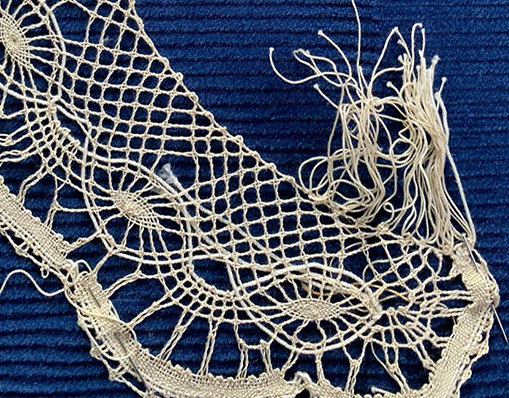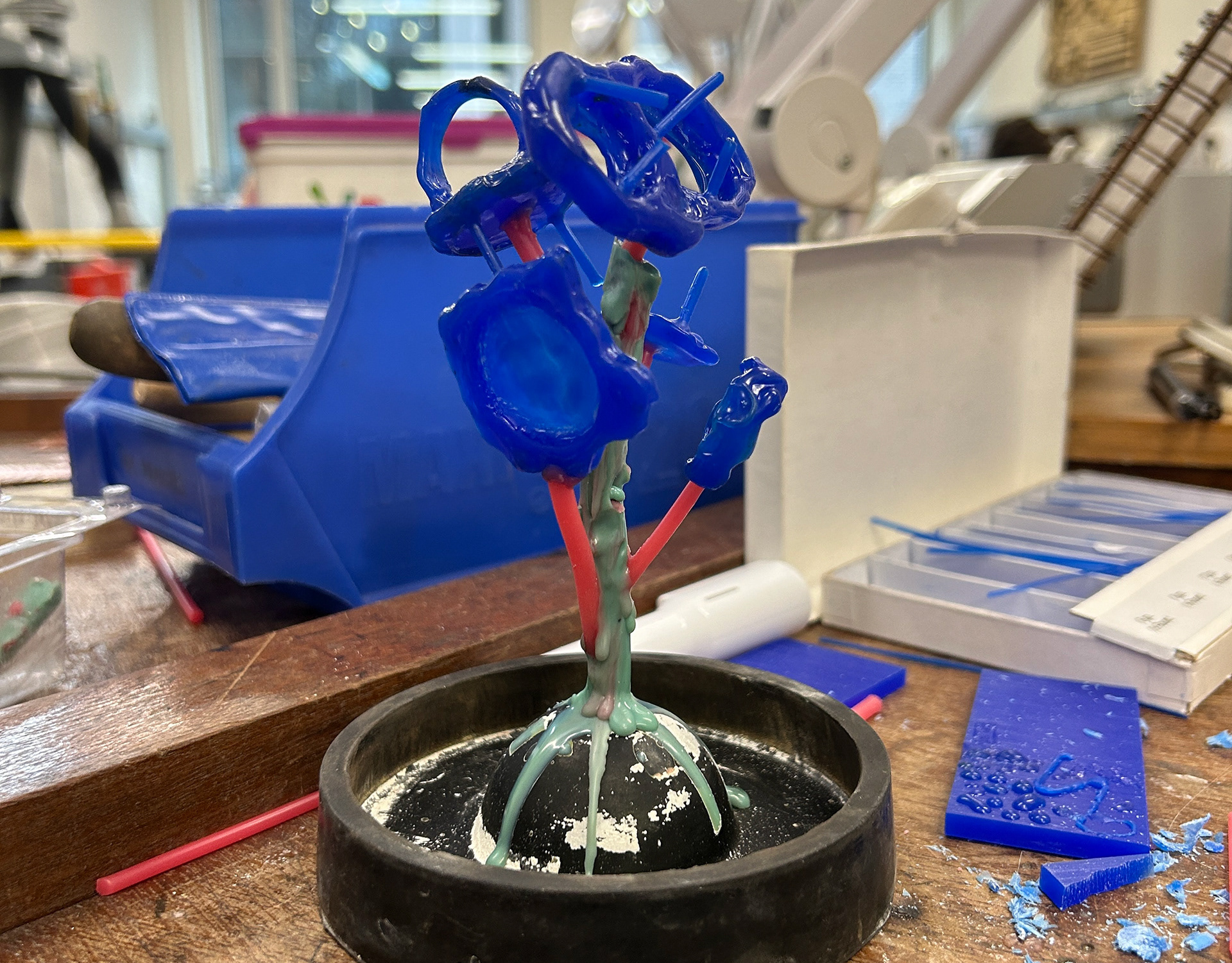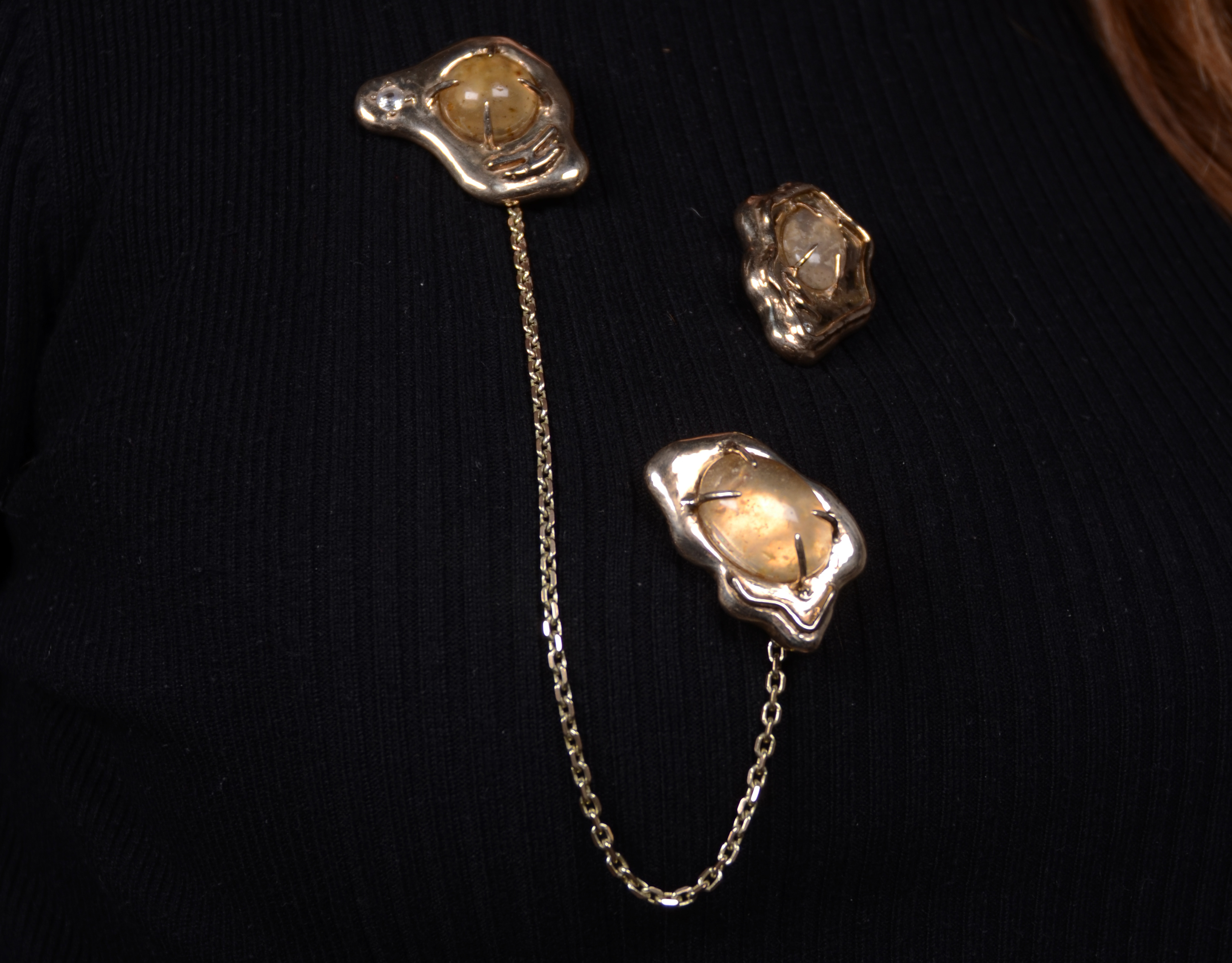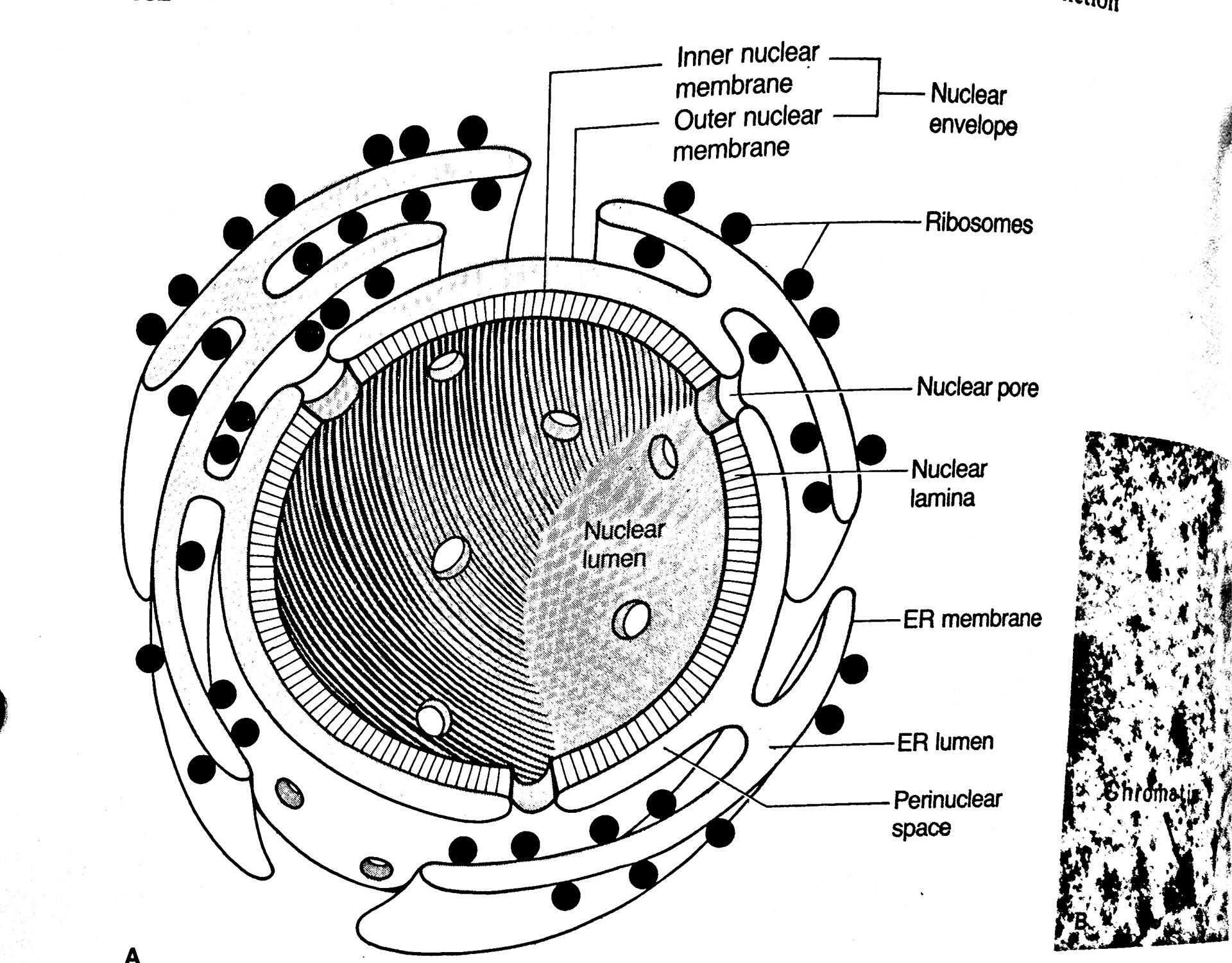Modular Spinning Necklace
Brass, Sterling silver, Lead-free enamel, Cubic zirconias
Spinning pendant
The components of my final piece
Artist Statement
My jewellery practice explores hand engraving, an ancient technique, to produce modern, modular jewellery. The designs for my jewellery are inspired by my grandmother’s Finnish lacework from the 1930s.
This body of work is inspired by another traditional technique, basse-taille. The method involves engraving a design and firing a translucent enamel on top, whereupon the enamel seeps into the groves on the metal, creating traces and textures of the design. My work used this process with the design drawn from my grandmother’s lace.
Basse-taille involves practice to hone engraving skills and understand the appropriate enamel application for the desired result. Testing and sampling was an essential part of the process to learn the process before applying the technique to more expensive silver.
The chain was initially envisioned in brass, and I developed texture into this design using stone-setting. The latter was applied through the enamelled pieces and cubic zirconias to give the final chain design a textural, reflective quality. Learning these additional skills also gave confidence to my practice.
Working with the enamelled pieces, I feel as if using these stone-setting techniques delivered an intriguing message. Despite not precious stones themselves, the time, effort, and dedication that I had put into crafting them, made me treat them with the same consideration as if they were.
The whole necklace has three modular aspects to the design. The clasp, the chain, and the enamelled set pieces are all interchangeable, allowing me to develop and create new pieces that slot right into a base design. Therefore creating a piece that has the potential to be forever changing, and suit each wearer's needs.
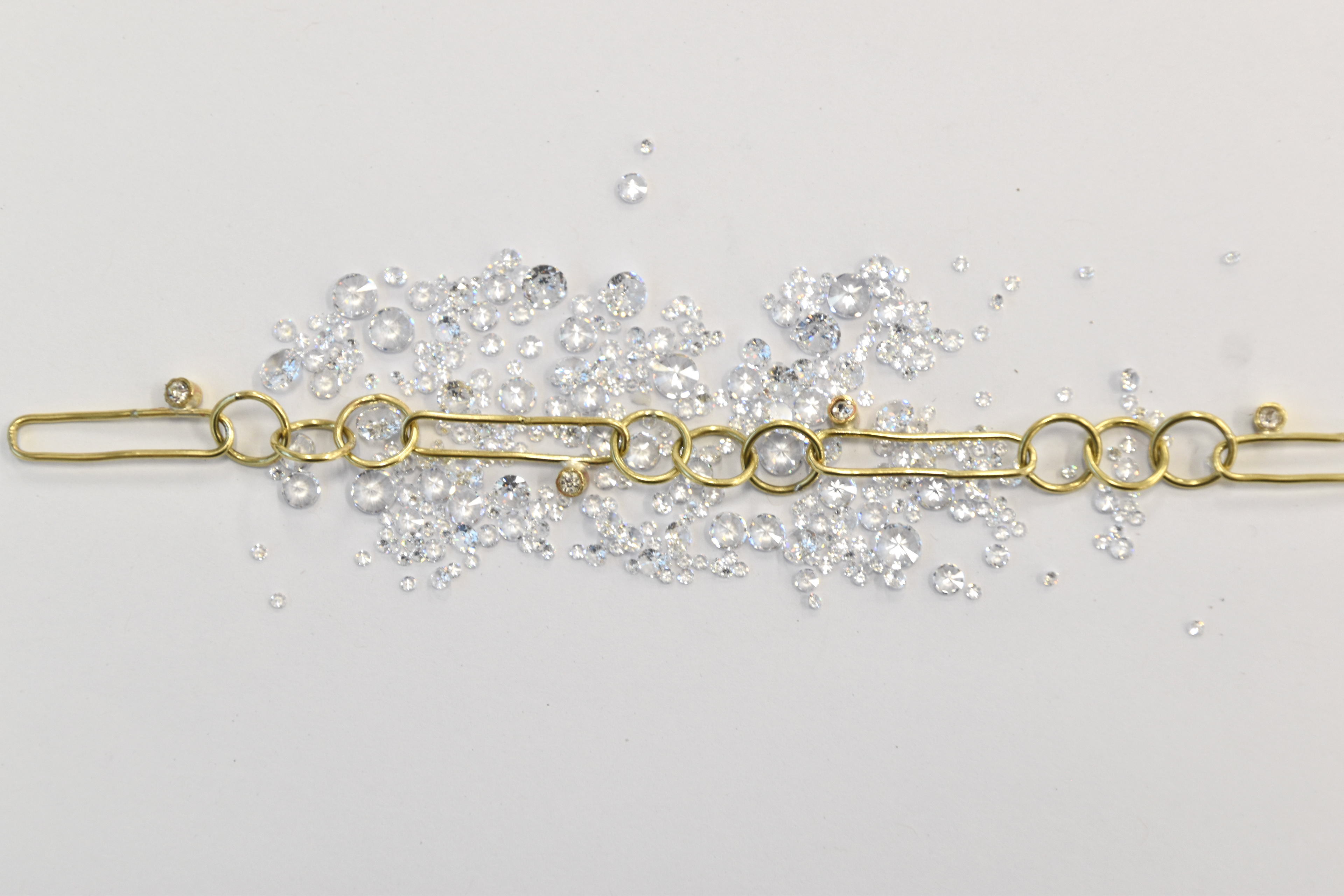
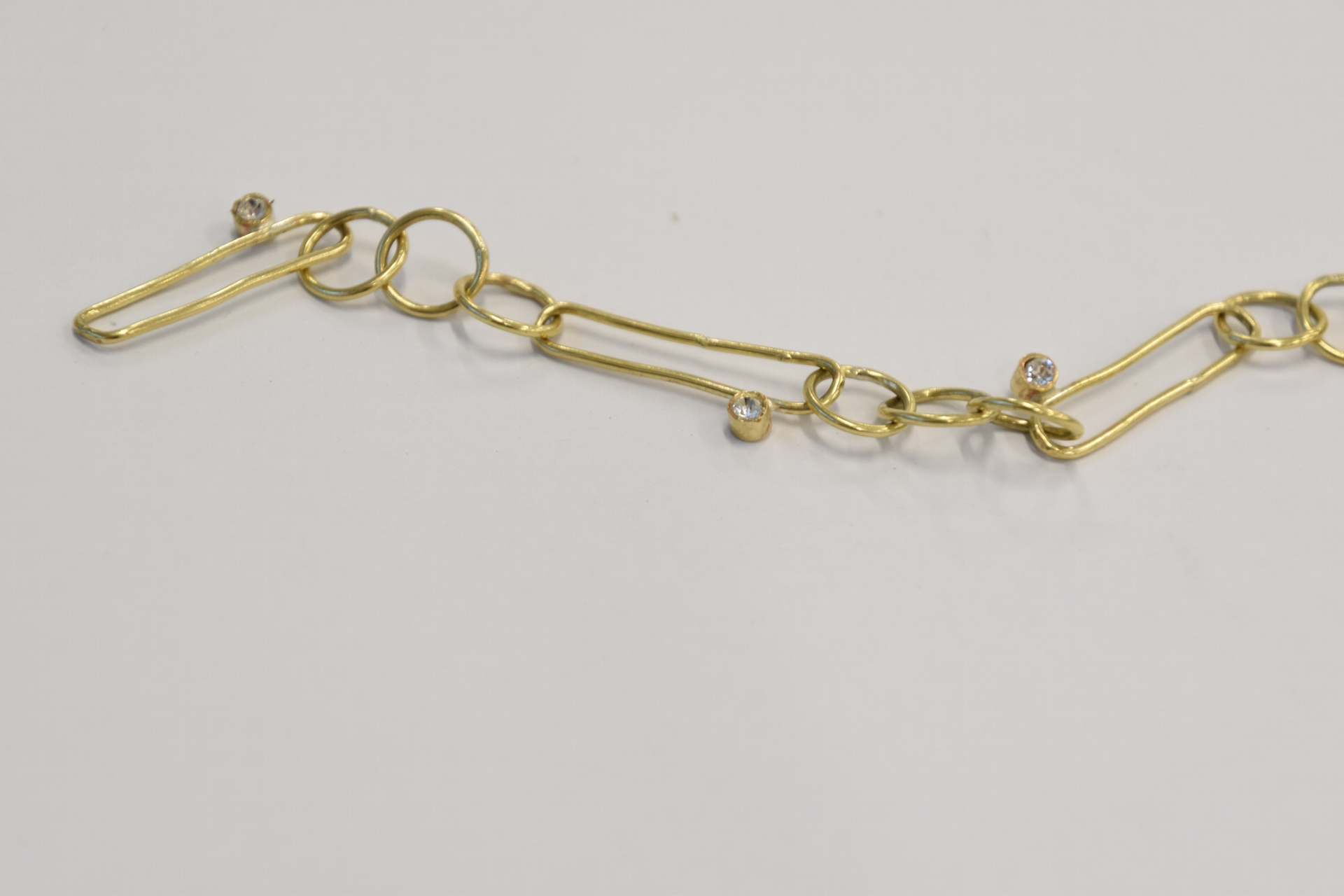
Figaro chain with added cubic zirconias
Modular Chain Aspects
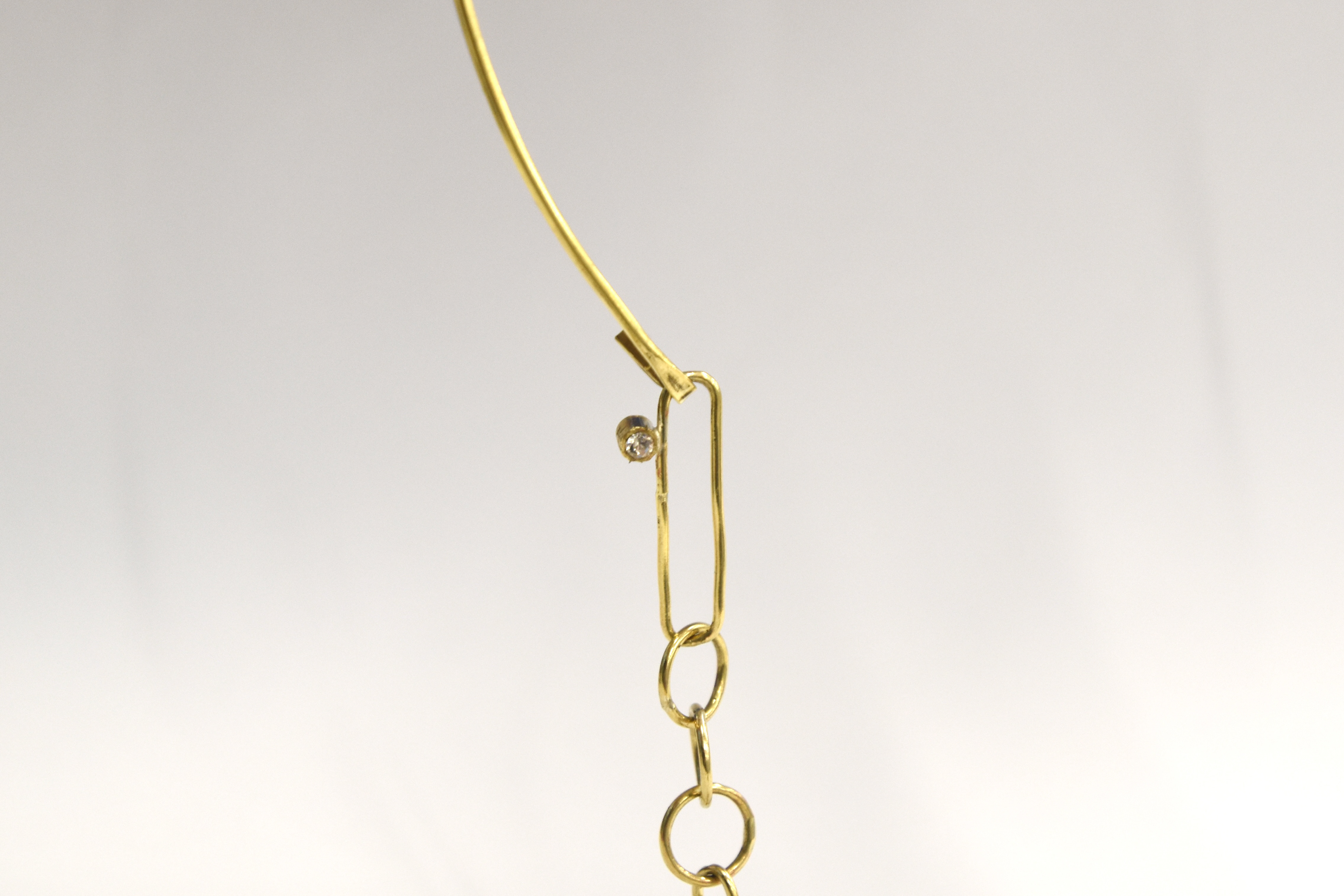
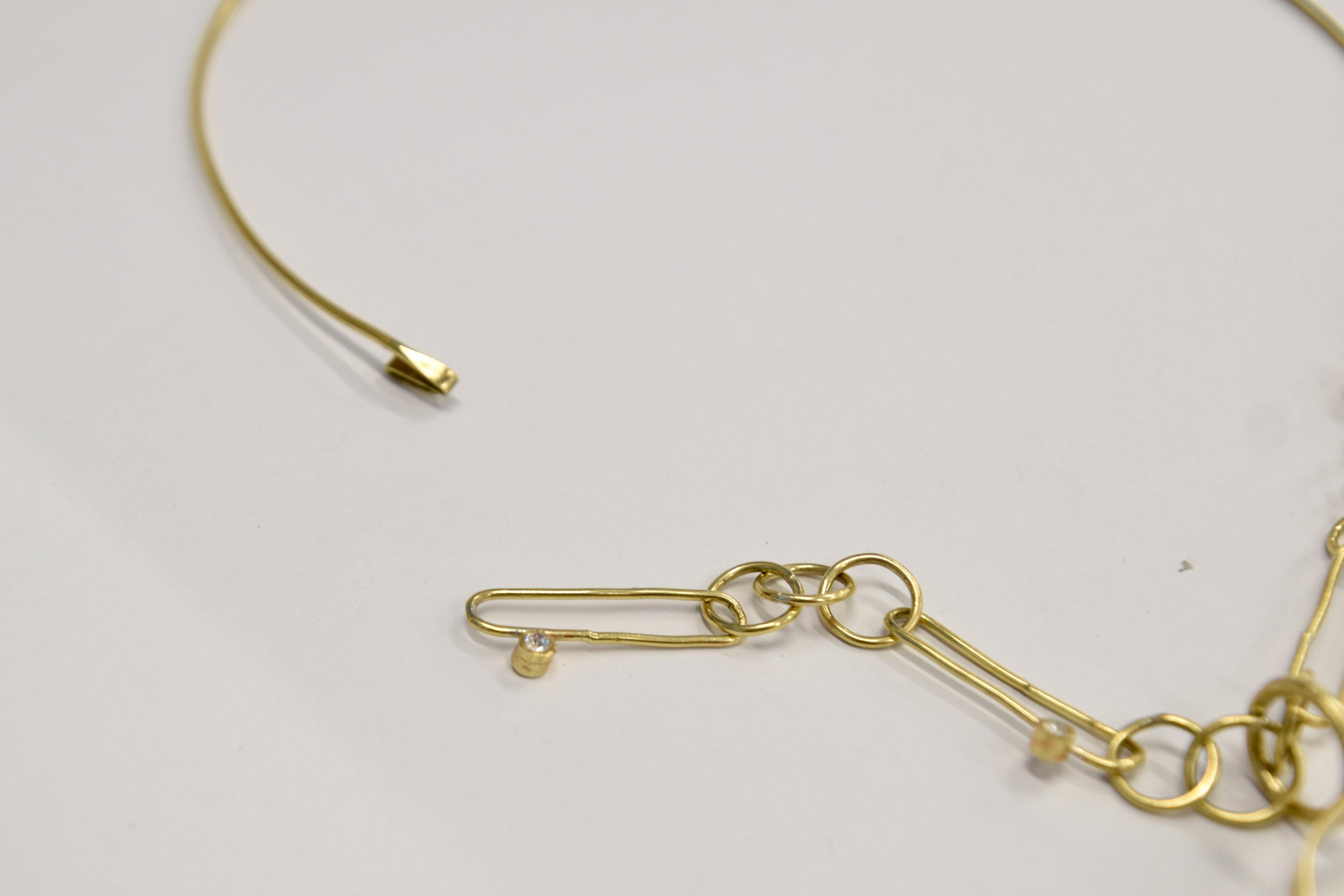
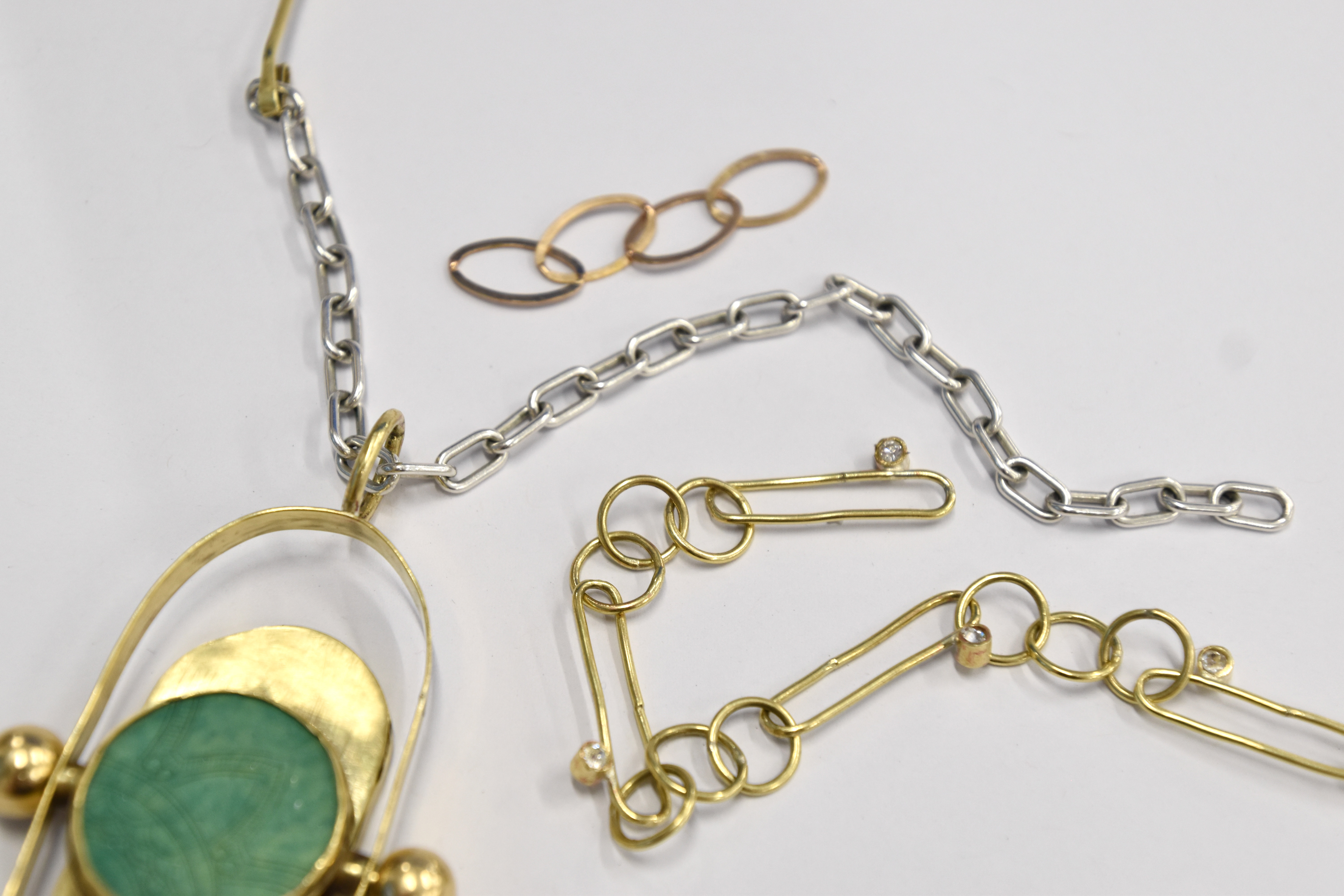
Showing examples of how different chains fit into my design
Both sides of my pendant
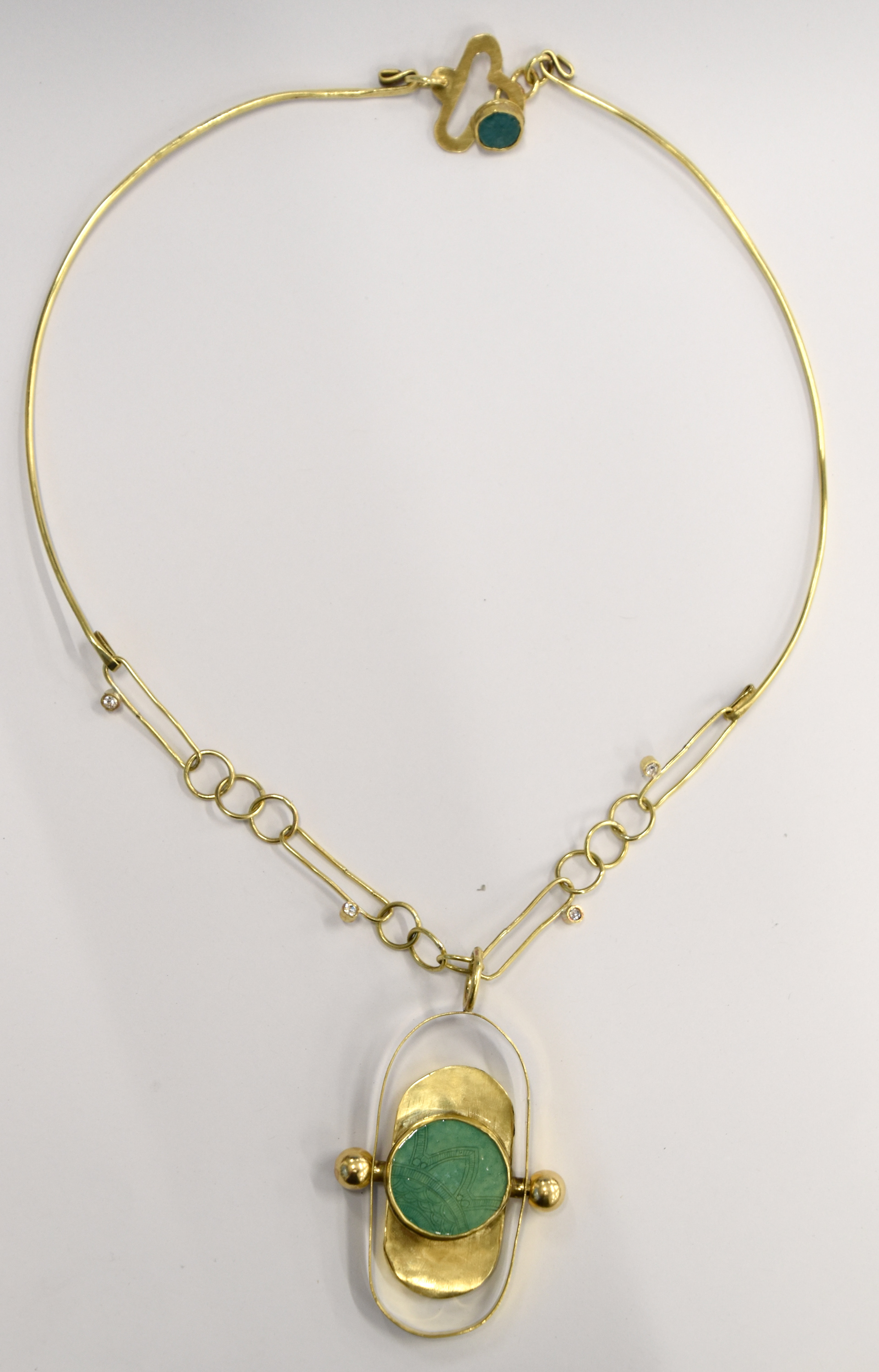
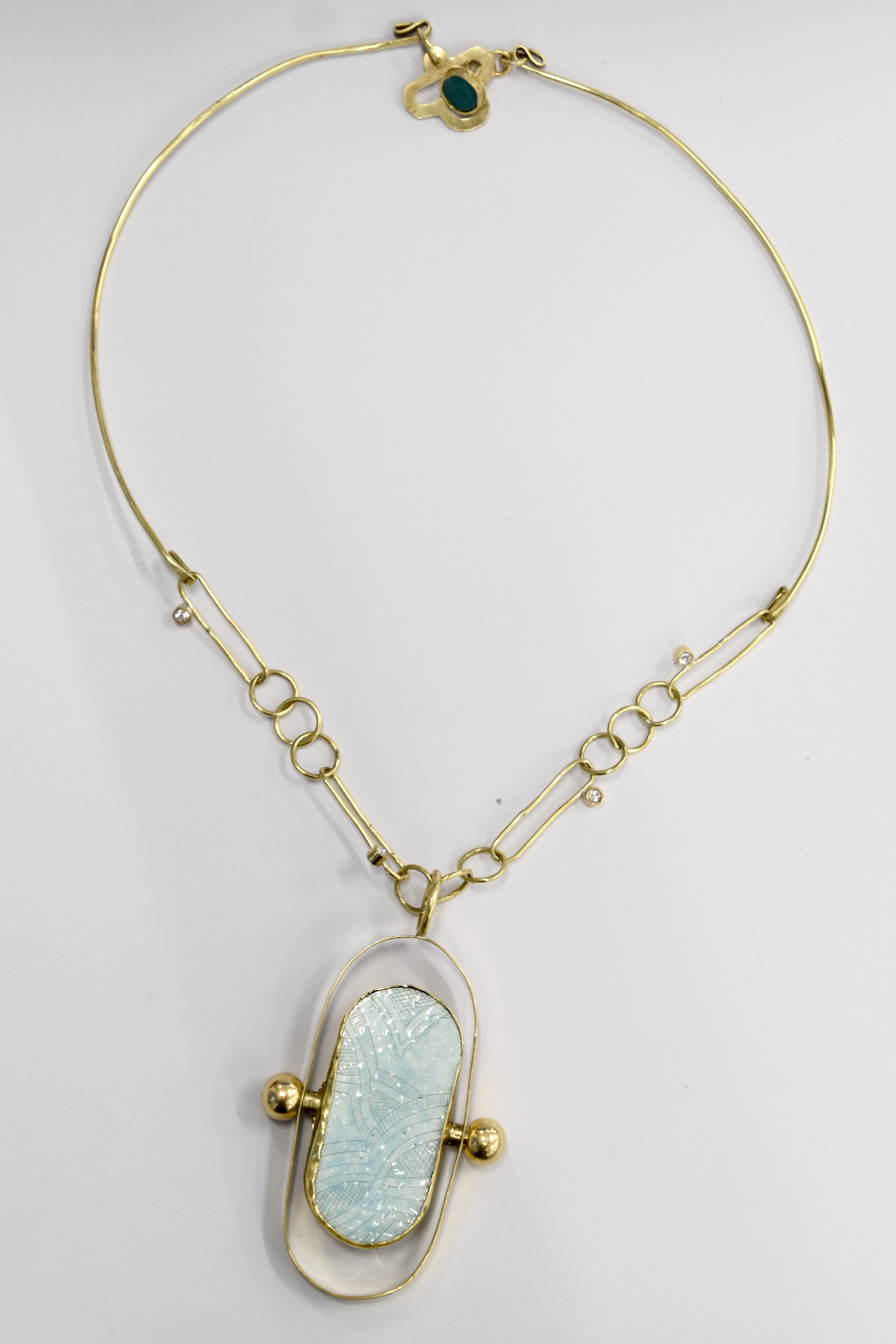

Spinning mechanism
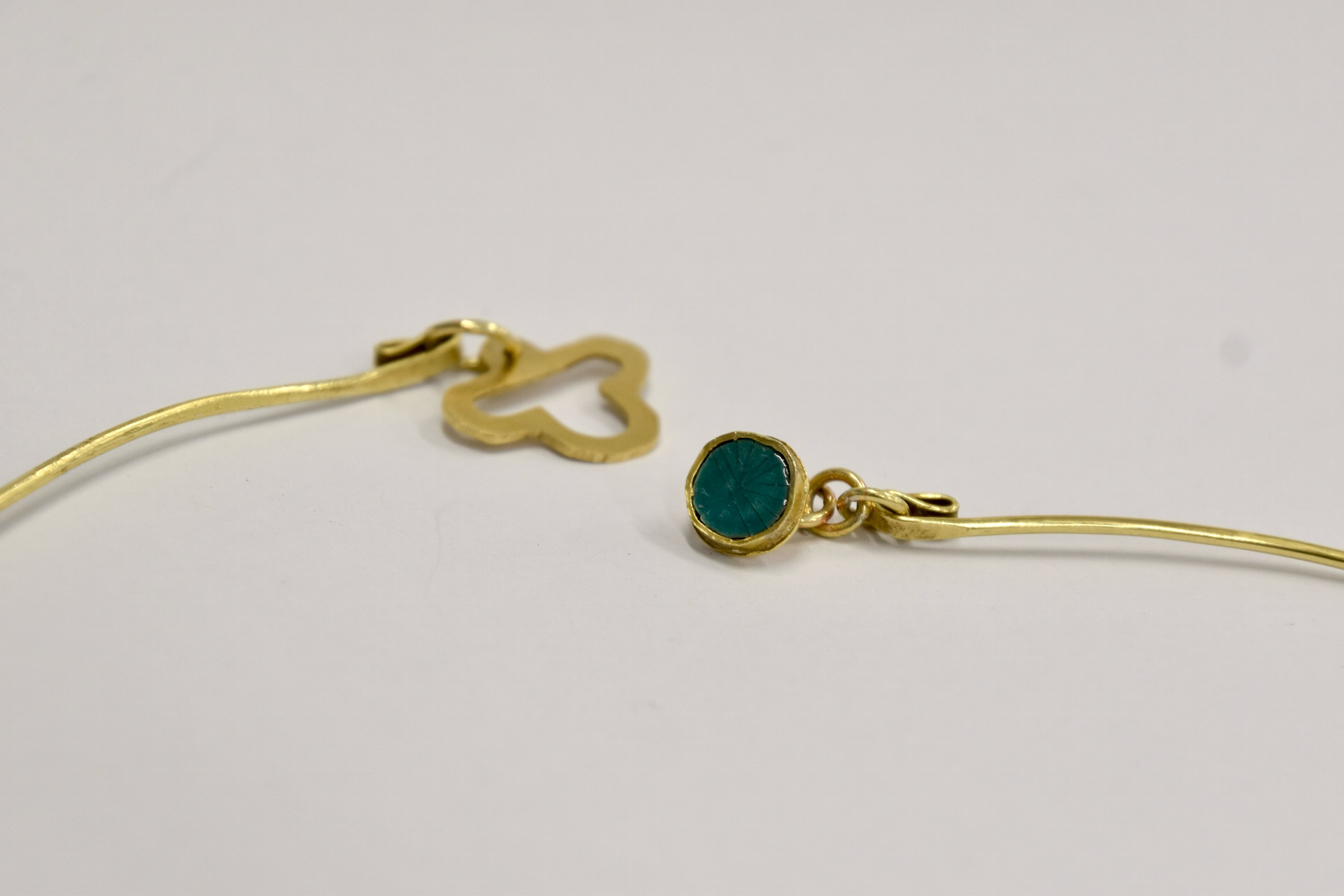
Back clasp
Wearing the Necklace
Experimental Photography
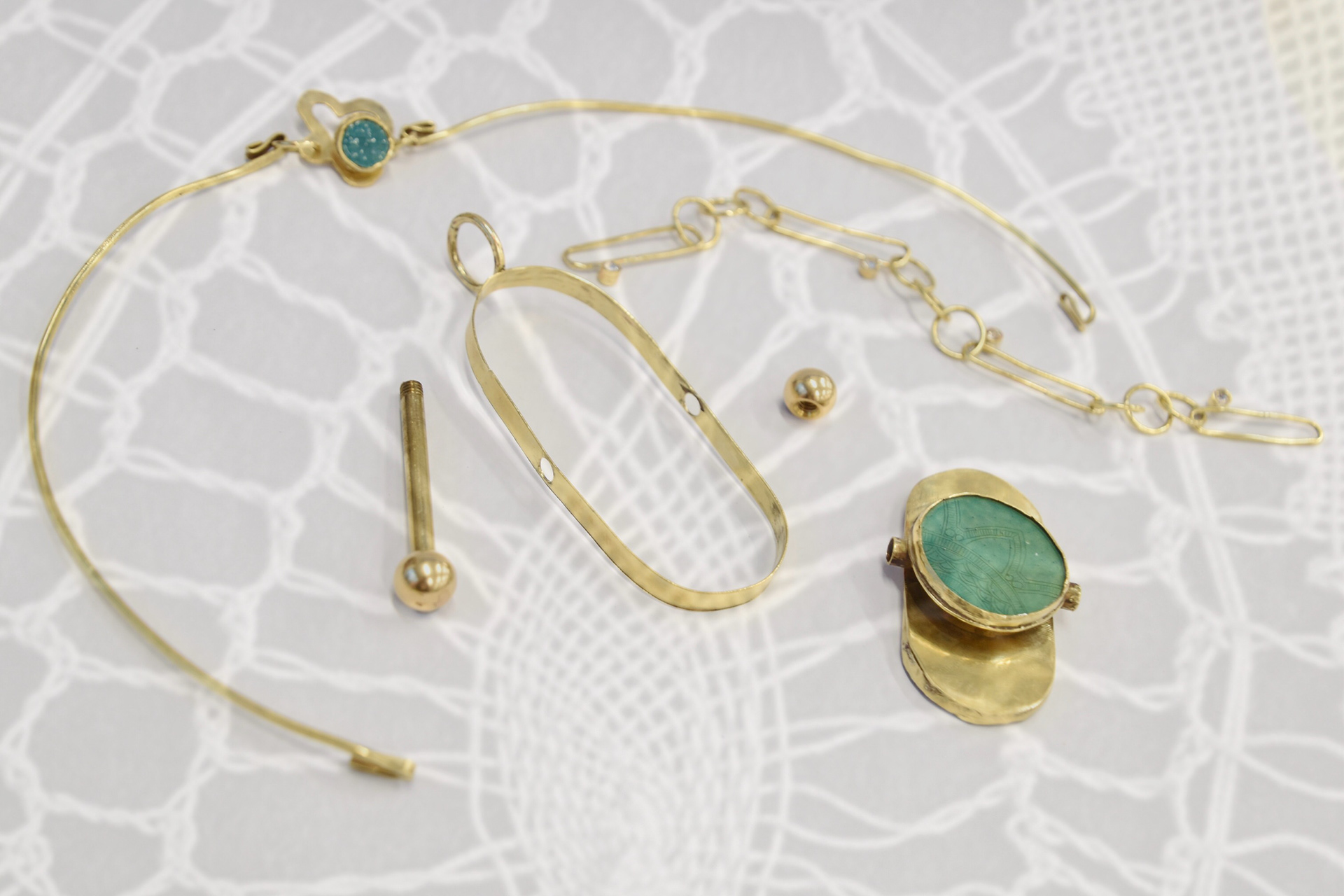
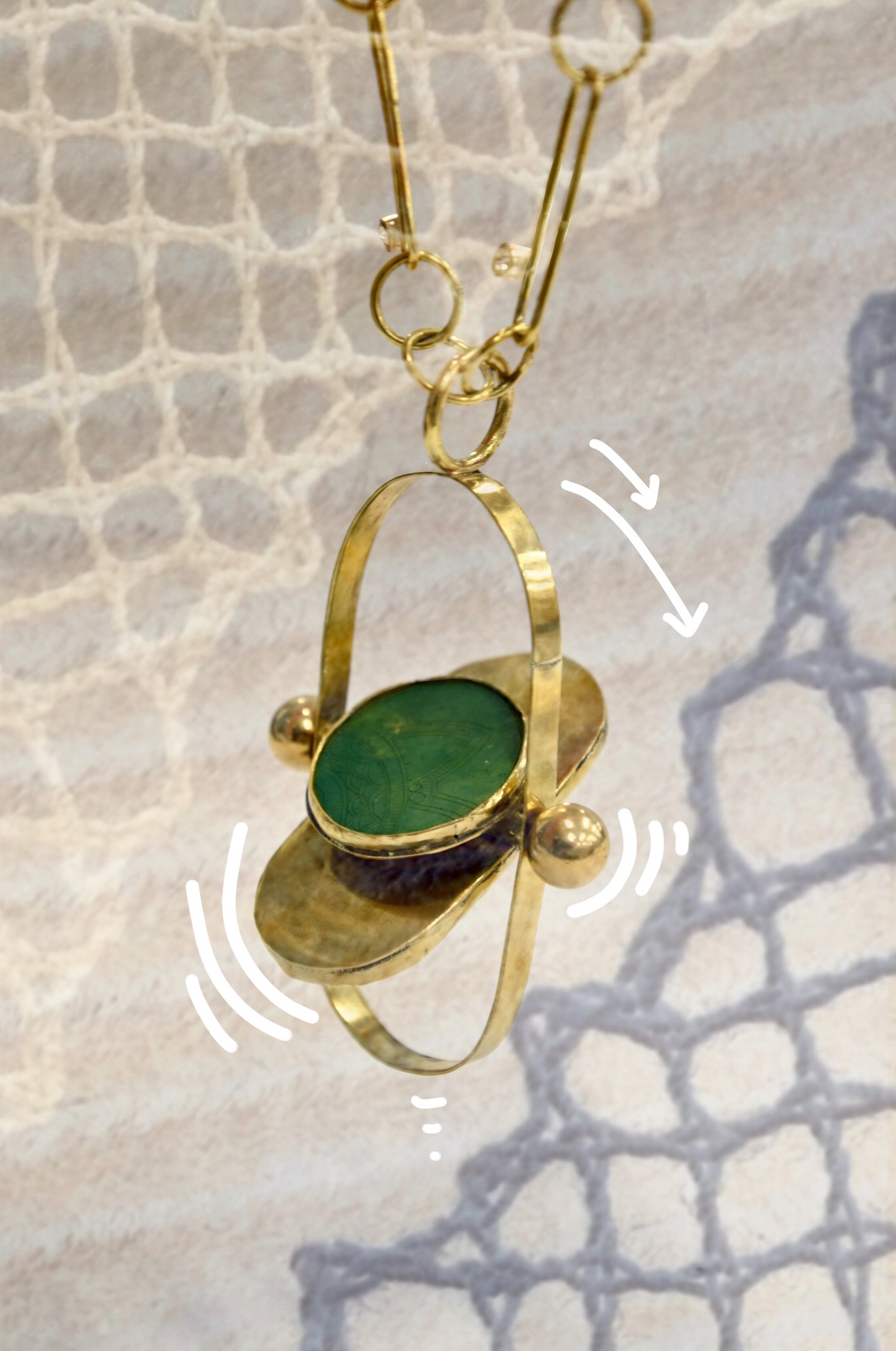
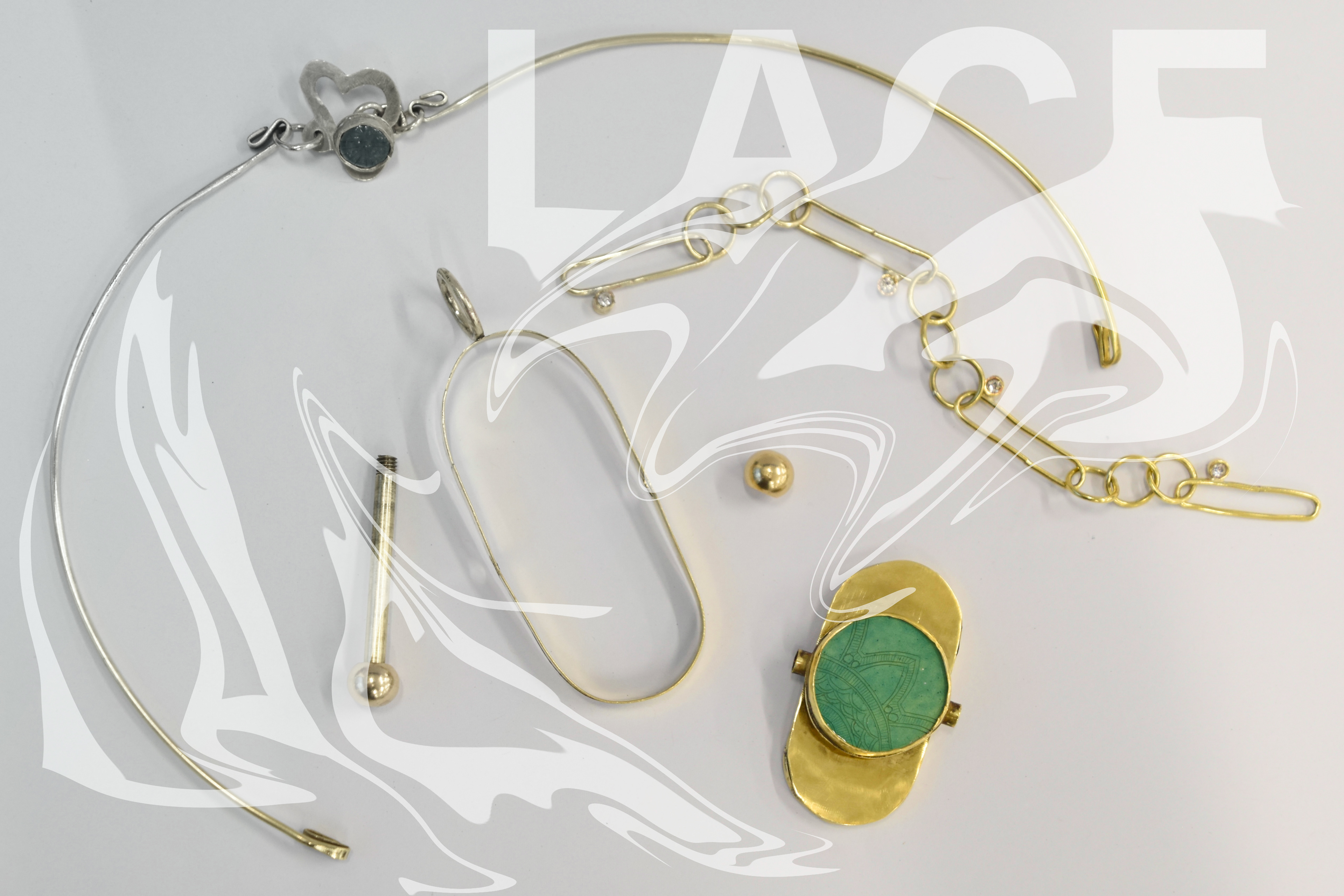
With the experimental photography, I attempted to show different people interacting with my final piece. I took design elements from the photography research I had found previously, including the use of drawing on photos. I also tried different ways of incorporating the original lace into my designs. I really pushed myself out of my comfort zone with these photoshops, as I have no previous experience with anything like this. I chose to have the green enamel as the main inspiration for these photos, as I never use colour in my photos.
While I'm not satisfied with these examples, it has given me a better perspective of the capabilities that photo editing can have when communicating jewellery. I plan to experiment with Photoshop and have more creative photoshoots to showcase my designs, this could be through the use of different lighting techniques, or including different textures. I also want to question how photography can convey the mechanisms of my designs, as well as the wearers interaction with jewellery.
I will look into resources and online courses to help with my Photoshop skills, for example, the adobe photoshop certification course through RISE.
Reflection
Throughout this project, I have pushed myself out of my comfort zone in many aspects. This includes exploring new techniques, like engraving. I found engraving extremely difficult in the beginning and often had thoughts about changing my ‘red list’ craft. However, I decided to pursue the technique, nevertheless. I explored engraving on different materials, which helped me understand the properties of different materials and how working with different materials can be vastly different. This included when it came to even the simple tasks, like annealing. Annealing silver was much more difficult and precise than it is with, for example, copper.
I have paired the engraving with a technique that I find enjoyable, enamelling. While enamelling is also a rather precise technique, I enjoy the sampling process, even the mistakes. I have learnt new ways to enamel objects and the ways that materials can react with different enamels. An example of this was using red enamel on silver, which leaves a brownish, burnt colour on the surface.
Throughout the project, my emphasis has consistently been on experimenting with various techniques. I intend to refine these skills as I progress throughout the course, recognizing that perfection does not happen first time, and that practice is the only way I can improve.
When it came to making my final piece, I used six main techniques/processes. This included: soldering, piercing, engraving, enamelling, stone setting, and polishing. While reflecting on my final piece, there are many of these techniques that I know I need to get better at. For example, the enamelling is slightly uneven. I want to use enamelling more in my work; however, I know that the only way that I can improve my skills is by testing and making material samples.
Technically, I want to improve my soldering; When making the stone settings and the chain, my soldering needs more consistency as there are a couple of gaps where I have either used too much heat or not enough solder.
I also want to improve my stone-setting skills for larger objects. Whilst I am able to produce these on smaller scale, the technical skills required on larger works are slightly different, and I need to master these.
This is the main skill I see myself using consistently throughout my practice. however, on the larger setting, the brass buckled on one side. I’m not too sure why this happened as I had precisely measured the dimensions for the setting; Further practice will help me understand the technique and material better.
When it came to polishing the piece, I couldn't get in between the two enamelled pieces, and so I have had to leave them unpolished. I plan to invest in some smaller polishing tools in the future to help create more refined, finished pieces.
Finally, I am happy with the spinning mechanism, but the interchangeable parts have become quite tough after soldering and setting, and having the tubing misshapen. I have enjoyed making a mechanism and learning how to use new tools. I have learnt more about keeping the mechanism secured while working with the annealed metal.
I am relatively happy with how my final piece has turned out from a design point of view; however, I feel as if my technique can be refined, something I hope to take into Understanding Context and other future projects.
